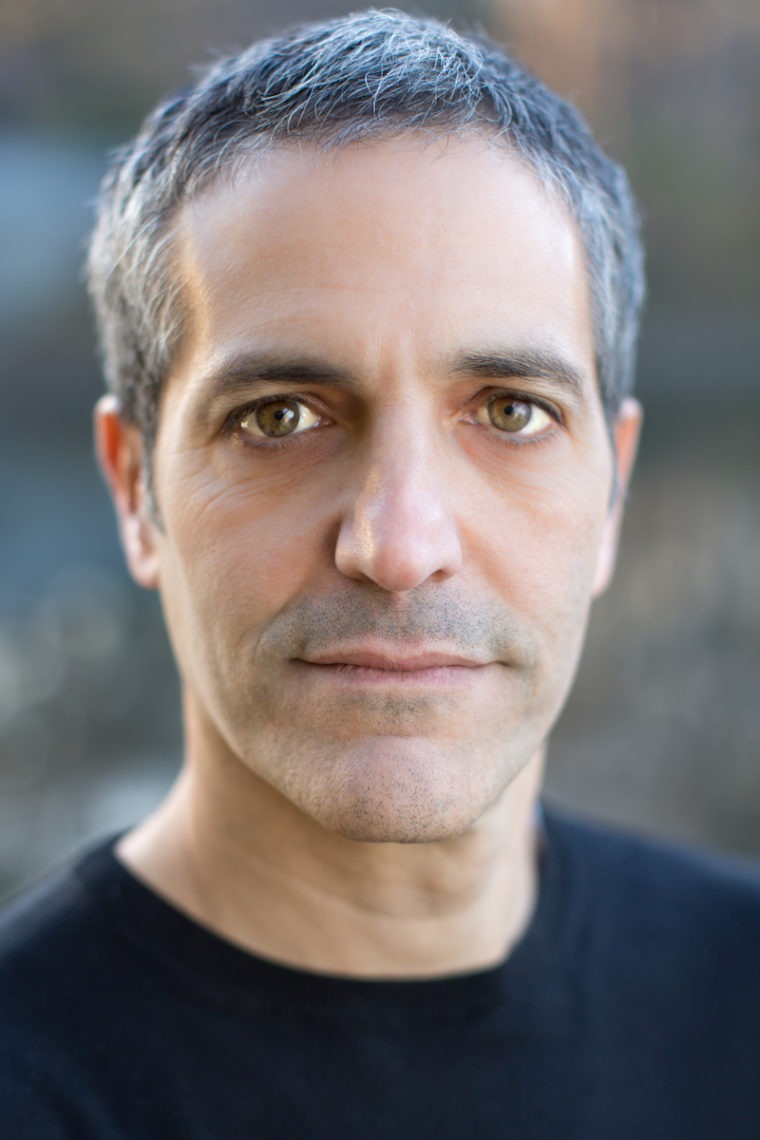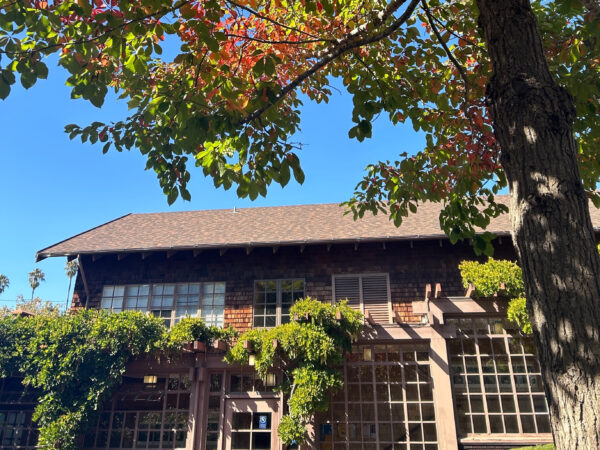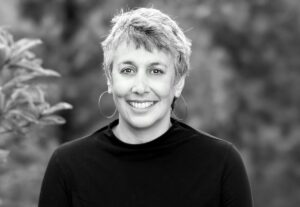
It was April 1992, and Sam Green had never been to Los Angeles before. A first-year student in the School of Journalism’s documentary program, he had volunteered to help a classmate shoot a video story on bilingual education in the city. It was a Wednesday, and the two friends had packed their supplies and one of the School’s hefty Betamax cameras into their car. But as they approached L.A., they could see helicopters hovering overhead. The sun was setting, and there was a strong smell of smoke. Unwittingly, the two novice journalists had stumbled into a pivotal moment in America’s history. While they’d been driving through the Central Valley, a trial jury had acquitted four Los Angeles Police officers of using excessive force in the arrest and beating of Rodney King.
The riots that followed were Green’s first experience as a frontline journalist. L.A. schools were closed—his classmate’s story was scuttled—and the pair spent the next few days chronicling a city in turmoil. On the evening of their second day, Green was filming a group looting a store in West L.A. The looters jumped him and stole the camera. Green dreaded returning to school, where he would have to tell his TV instructor, the award-winning broadcast journalist Andrew Stern, that he had lost the $80,000 Betamax. But when he returned to Berkeley, Stern’s response was surprising: “You did the right thing,” his instructor said. The pair’s journalistic instincts had won out. They had stayed, and they had got the story.
Green would go on to become an acclaimed filmmaker. His work has been broadcast nationally on PBS, included in the Whitney Biennial and nominated for an Academy Award. But when he arrived at Berkeley, none of that was in his plan. “I was going to be a newspaper reporter,” he recalls. “And then one day I was signing up for classes and a friend of mine said, ‘Hey, do you want to take the documentary class? I’ve heard it’s really easy.’ ”
The documentary program, one of Berkeley’s most rigorous, was not the leisurely pastime Green’s friend had suggested, but Green soon found it to be his calling. He studied under Prof. Marlon T. Riggs, the celebrated filmmaker, in a class that exposed him to, as he says, “the world of non-boring PBS documentaries.” In the pre-YouTube era, Green’s second-year peers would pass down obscure documentaries on VHS to the younger students, and he remembers visiting the library to hunt through the university’s videotape collection.
Green would be one of Riggs’ last students. Suffering from AIDS, Riggs sometimes taught the class from home over speakerphone. “He was incredibly smart and articulate, and his work was very special to me,” Green says. “That was a very early, important experience for me, in terms of glimpsing a sensibility and a creative vision that still animates me today.”
After graduation, a recommendation from journalism professor Lowell Bergman landed Green a job at a news magazine show in L.A. “The show was dumb, and it made me realize, for myself, TV news was not an avenue I wanted to go down,” he says. But the job did give him the chance to learn to edit footage. He spent nights in the show’s editing booth, figuring out the new systems and learning a lucrative skill. After a year, he moved back to San Francisco and started making films.
“The Rainbow Man/John 3:16,” Green’s first film, was made “just 100 percent, completely for fun,” Green says. Released in 1997, it was the wrong length (42 minutes, which, according to Green, is too short for a feature documentary and too long for a short film: “just, like, perfectly terrible!”) and he forgot to license some of the footage. When someone from the Sundance Film Festival called to tell him the film had been accepted, he thought they were playing a joke.
Over the next few years, Green continued to put out work. In 1995 he found himself in the Library of Congress, looking at a Senate Report on the militant left-wing organization known as the Weather Underground, which attempted to overthrow the U.S. government in the 1960s and ’70s.
Green was immediately drawn to the mugshots in the report. “They weren’t smiling hippies,” he says. “They were these greasy-haired, short-haired kids, and they looked mean. But they were middle-class white kids. It was very intriguing.”
As he looked through the photos, he realised he recognized one of the young men. It was a friend of a friend from San Francisco. Green called him. “Yeah,” the man said, “you found out about my secret past.”
The film that resulted from that serendipitous moment, titled “The Weather Underground” (2002), premiered at Sundance and was nominated for an Academy Award. New York Times film critic Elvis Mitchell called it a “terrifically smart and solid piece of film-making.”
Green credits that to his education at Berkeley. “The tools that I use in all my work are tools I learned in J200,” he says. “Reporting. Research. Digging. Interviewing people. All that stuff is profoundly valuable.” For this project, his challenges included tracking down former Underground members and sourcing archival footage of a group that spent years in hiding. “It took a long, long time to gain people’s trust,” Green says. Nonetheless, he believed in what his J200 instructor, Lydia Chavez, had taught him: that building relationships with sources takes time, and pays off.
Since 2010, Green’s interest has been focused on what he calls “live cinema projects.” Part movie, part concert, part lecture, these films combine in-person narration by Green with live music and projected film clips and photographs. His latest project explores the renowned Kronos Quartet, which has performed with a rotational membership for over forty years.
For Green, this form is both an aesthetic choice and a political statement. In the Netflix age, audiences are become accustomed to consuming culture alone, in the confines of their bedrooms. “I think that there is something profound and important about being in a room with strangers,” Green says. “The energy of other people in the room shapes our experience.” By requiring his audience to enter a theater, Green compels us to consider art from a collective perspective, as well as an individual one.
From a filmmaker’s standpoint, there are clear benefits to presenting work on the big screen. Green likens watching a movie on a laptop to consuming a gourmet meal in a car. For the real experience, he says, you have to go to the theater. “You’re awash with these huge images, and music and sound going right in to your innards,” he says. “Those are the tools of cinema. And if you’re making movies, you want to use those tools to their fullest.”
This approach shifts his work into a more nuanced, lyrical form of filmmaking. “If a lot of documentary film is prose, then his is an attempt to create a poetics of documentary film,” says distinguished author and Harper’s columnist Rebecca Solnit. A J-School alum, like Green, and now godmother to his son, Solnit and Green became close after meeting at Berkeley. His work, she says, examines “the associative, ruminative way that things connect,” rather than blunting truth with simple facts.
Green plans to tour with his Kronos documentary for the next couple of years, but in the meantime he’s working on what may turn out to be his favorite—and most ambitious—project yet: filming the oldest person in the world.
As he points out, it’s a record that changes often. Chronicling the titleholders will take him across the globe, recording men and women from myriad cities, counties and cultures. On one hand, he admits, the film’s premise can look silly. “On the other hand,” he says, “I find it’s a very profound poem about time and mortality and who we are as people.” He has just finished filming with the last person to be born in the 1800s.
For Green, “The Oldest Person in the World” is a project that could span a lifetime. With only a hint of jest, he lays down his vision for the film. “I’m just going to keep filming, and every couple years I’m going to update it or change it,” he says. “And I’m going to do that… forever. For the rest of my life.”
Rosa Furneaux (’18)
Dean's Newsletter

October 17, 2024
Berkeley Journalism Quarterly Newsletter
Fall 2024 Dear Berkeley Journalism Community, In mid-September, I stepped in as acting dean at UC Berkeley Journalism when Dean Geeta Anand took leave for the semester. While I…

Quarterly Newsletter From Dean Geeta Anand
March 27, 2024

Quarterly Newsletter from Dean Geeta Anand
June 15, 2023
